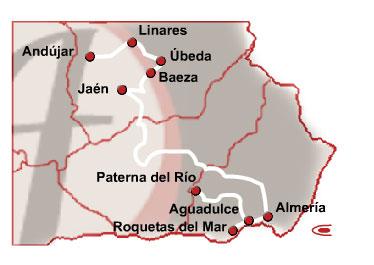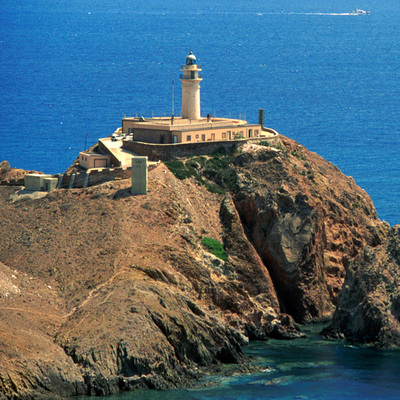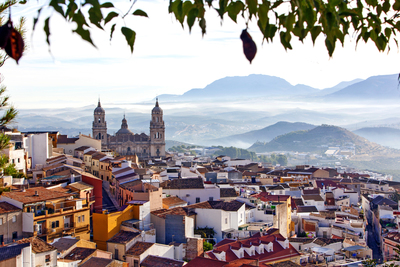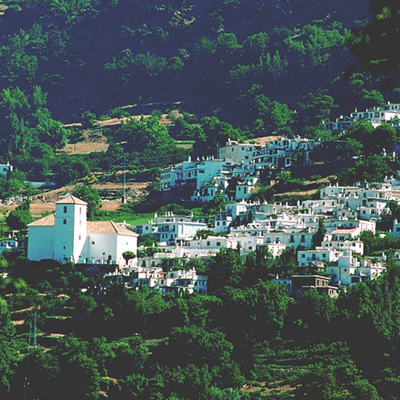The Las Minas Route
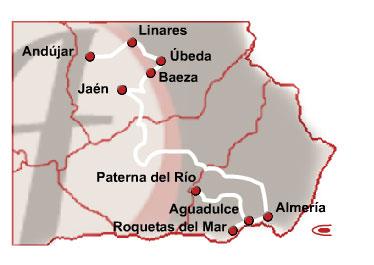
The styles most associated with Jaén are the fandangos from Puerta de Segura and the jotas from Siles, Albanchez and El Ojuelo. This explains the influence of Jaen province in creating the Levante eastern styles. Other common styles in the region are trilleras, temporeras and pajaronas, but its greatest resource is Las Minas, a distinctive and genuine flamenco style based on the taranta. This is why the starting point of this journey, poised between flamenco and an art renaissance, is Linares.
This route has to start with Rafael Romero El Gallina, the successor to the legendary José Yllanda. This artist from Andújar rescued all of the songs from his native land and brought the fore the taranta style, subsequently to be taken up by Gabriel Moreno, from Linares. There were many roadside inns and staging posts in the region, which were the setting for the transmission of musical styles between Murcia and Jaén. It is said that this was how the madrugá song style - an antecedent of the first tarantas - came from Murcia to Linares.
Starting in 1852, Linares experienced a period of intense mining activity. The arrival of foreign companies led to growth in the area, attracting many artists to come to try to make a living. Cafés with live singing were opened, such as Colón, Cortijo Real and Manolín in La Carolina, and Café de Los Meleros, La Perla, El Minero, El Pasaje, Café Marín, El Exprés and Salón Regio in Linares. Many disappeared with the decline of the mines, but others survived to be converted into flamenco clubs and associations.
From this environment sprang singers like Basilio de Linares, Bizco, Calaco, Pescaero, Vagonero, Sordo, Personita, Arriero and Cabrerillo, who have inspired others like the current star Carmen Linares.
Almería is historically the land of the fandango style. This style is sung and danced here from Adra to Níjar, from Balerma to Laujar and from Serón to Vera. We have to go to the city of Almería to visit the El Grillo, Los Jardinillos and Lion D'or cafés, which were the first to be established in the area. Nearby, Juan Breva opened his fried fish business, known today to all the inhabitants of Almería. This was in Calle Real Street and was the scene of performances by artists like Ciego la Playa and Pepe el Marmolista. The importance of the Almería's Casino in the history of the taranto style should also be mentioned. It was here, starting in 1881, that La Rubia de Málaga and El Canario appeared.
Torregarcía is a place located on Almería's beach near to Cabo de Gata, much alluded to in old taranto lyrics. It is said that it was Juan el Cabogatero, a man who had a hard violent life, who created the taranta form around 1810 in the Sierra Almagrera mountains, which is another of the places that should be visited on this journey.
Finally, the tour should end in Paterna del Río, a town believed by many experts from Almería to be the source of the petenera form. What is certain is that this form has been sung for a great many years in the town and its surrounding areas.
Almería's current flamenco activity centres around the city's flamenco associations, such as El Taranto and El Arriero and the promising Los Jóvenes Tempranos, where leading local artists, led by José Sorroche, interpret their songs.
A visit to discover flamenco in Andalusia's easternmost province requires a different perspective: that of the guitar. You must walk along the Paseo de los Castaños, which is the inspiration for the most recent creations by Tomatito , and go to the Gerundino workshop to see Sonanta guitars in the process of being made. This is the native land of Julián Arcas, one of the first flamenco guitarists in history and creator of a soleá that survives today thanks to Maestro Amate and Tomate Viejo, the grandfather of Tomatito.

